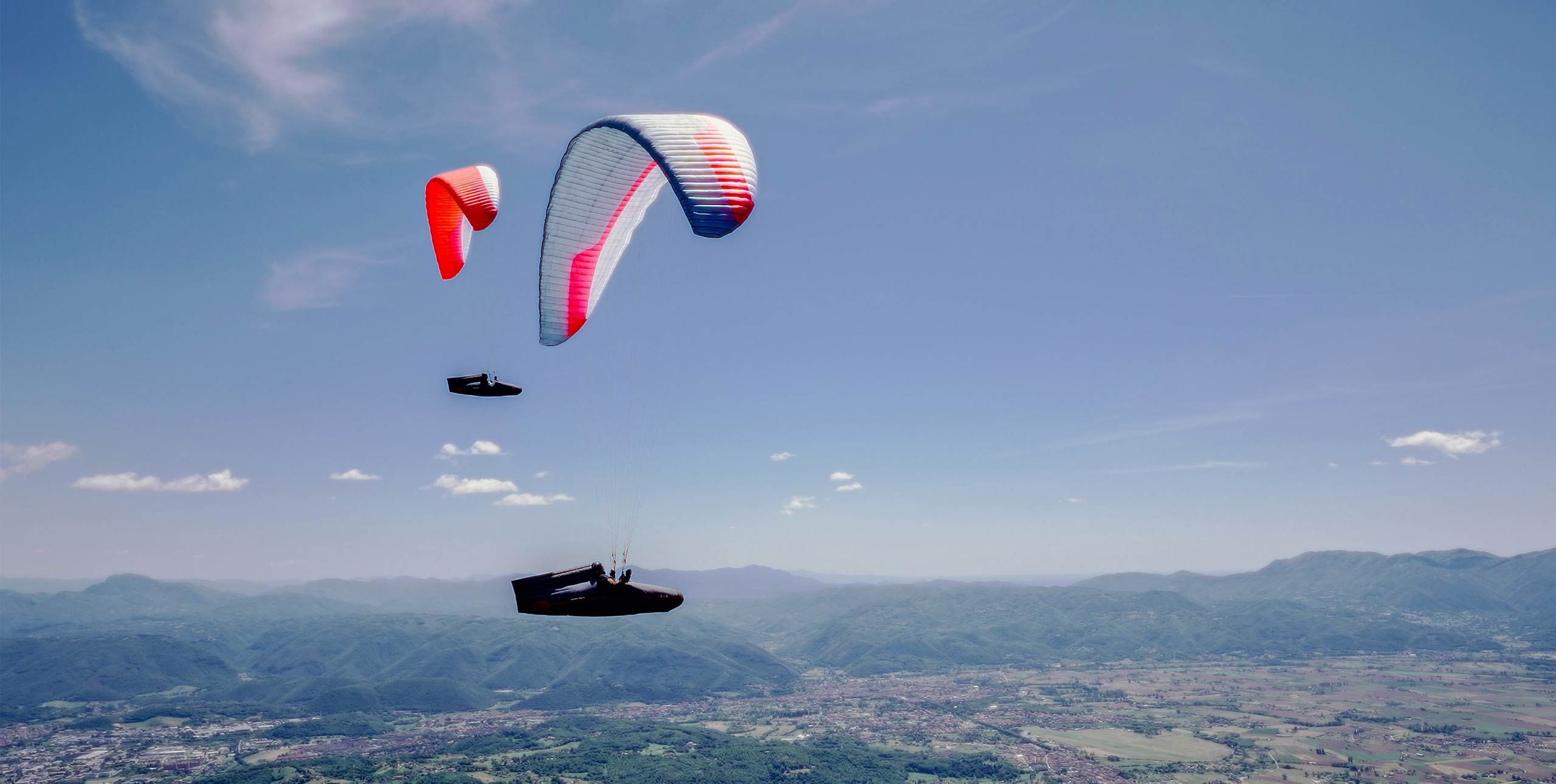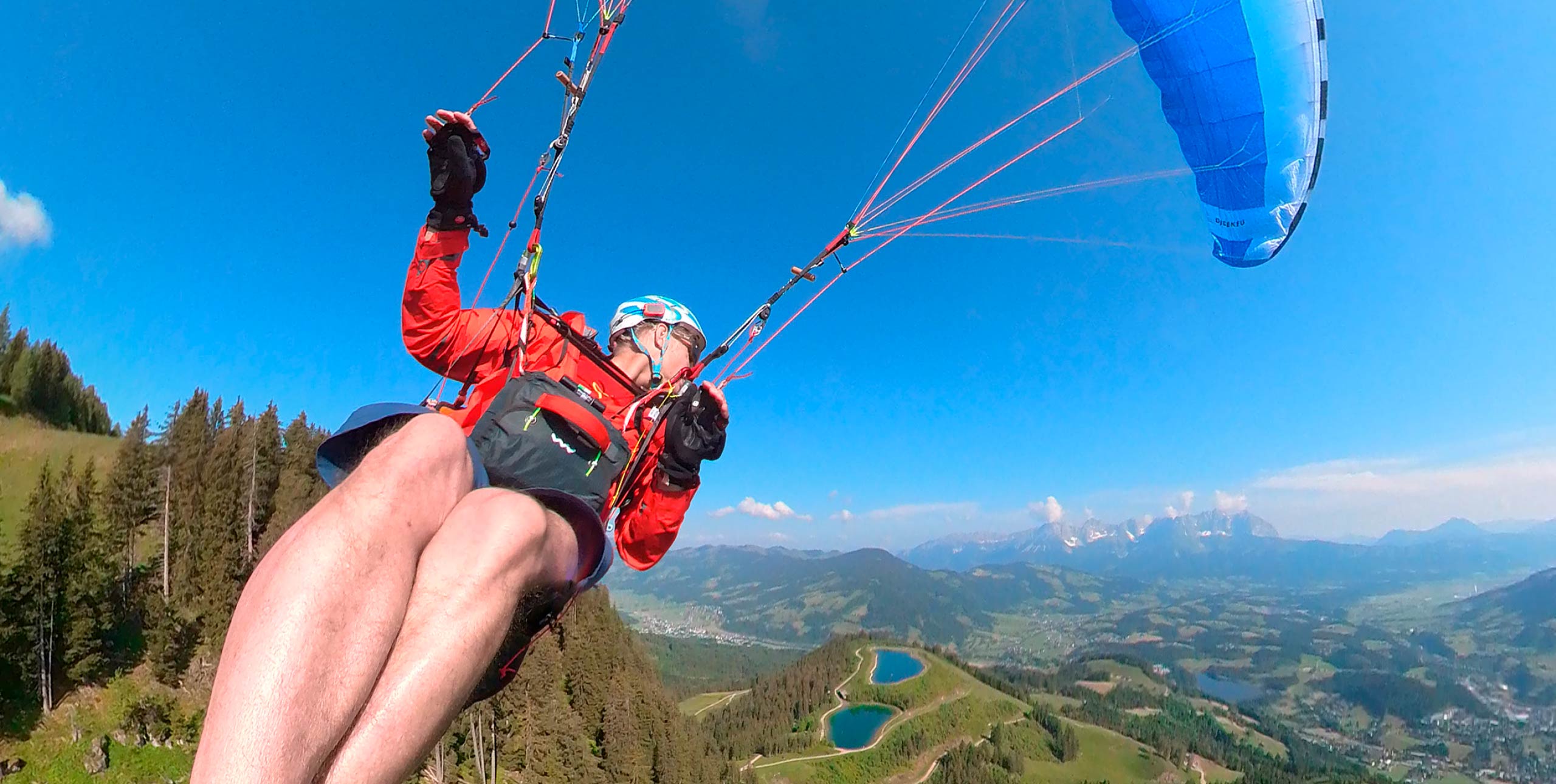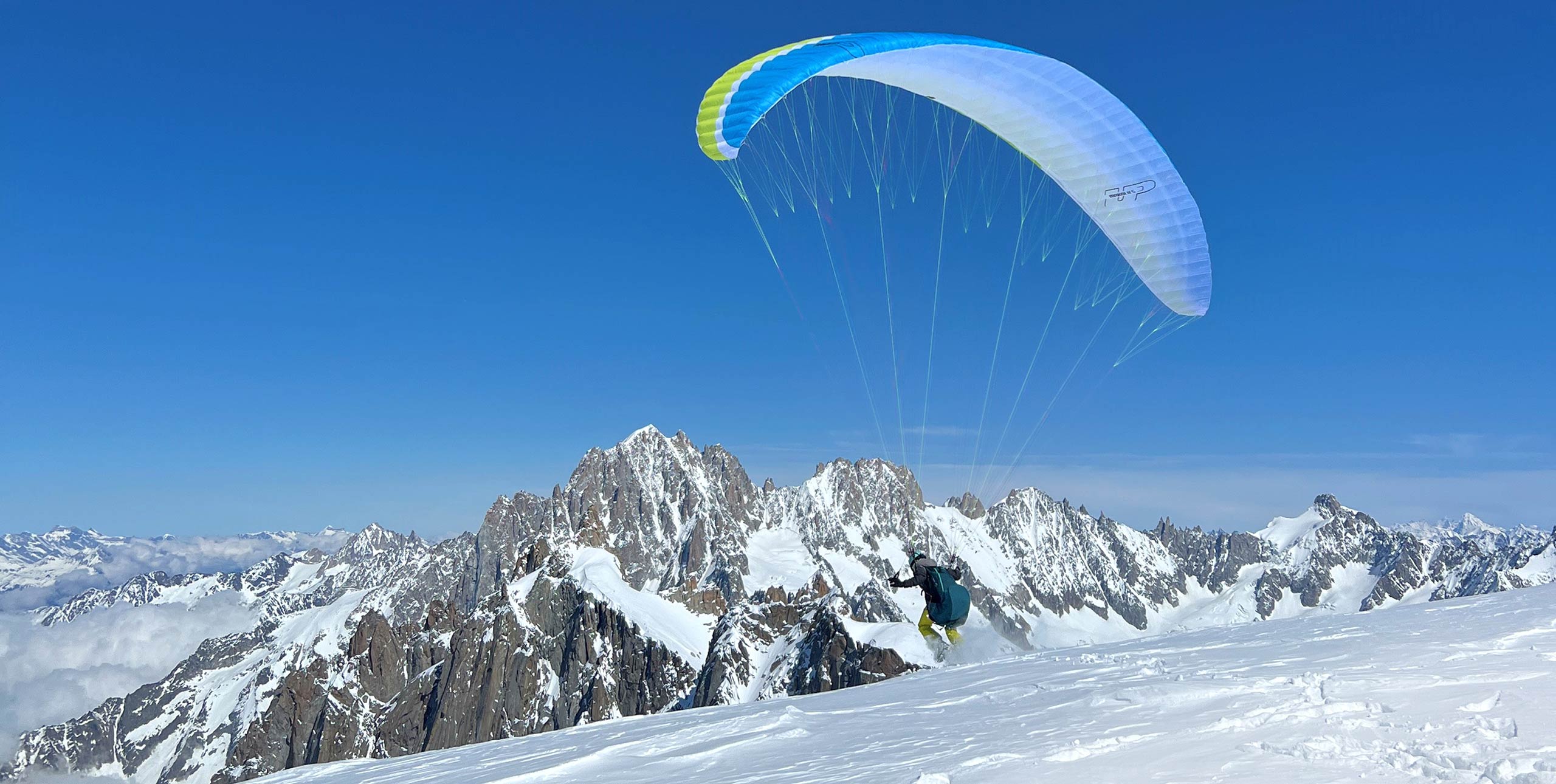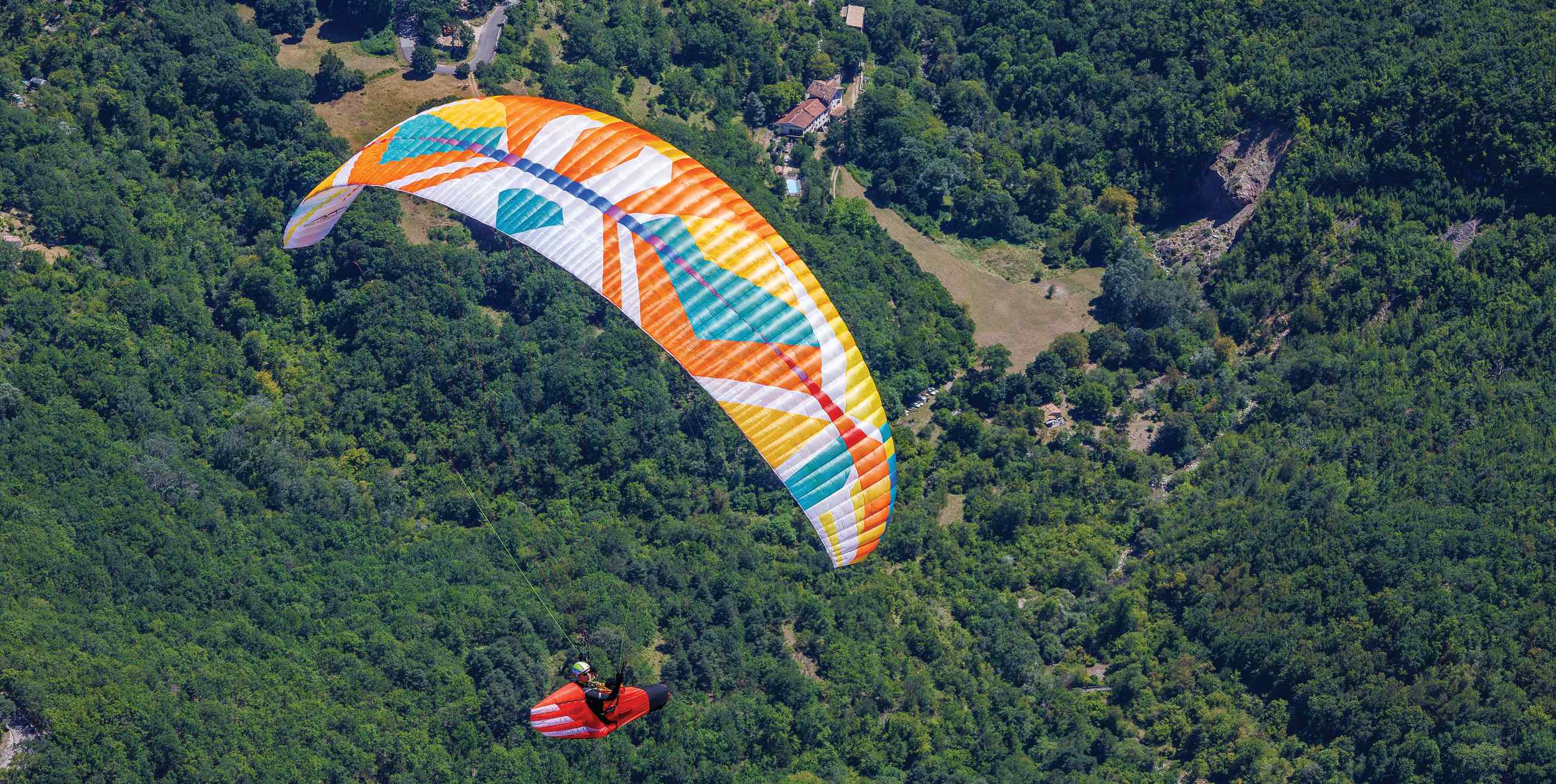
They say leopards can’t change their spots – but the Lynx clearly can. Marcus King flies this new lightweight EN C.
The original Lynx was released back in 2017 and was a lightweight version of the original Cure. However, when the Cure 2 was released in late 2019 it made use of lightweight materials and optimised construction, so when it came to creating a new Lynx possible weight savings were limited. So instead, for the Lynx 2 BGD decided to create a whole new glider. I got my hands on one to fly in the south of France.
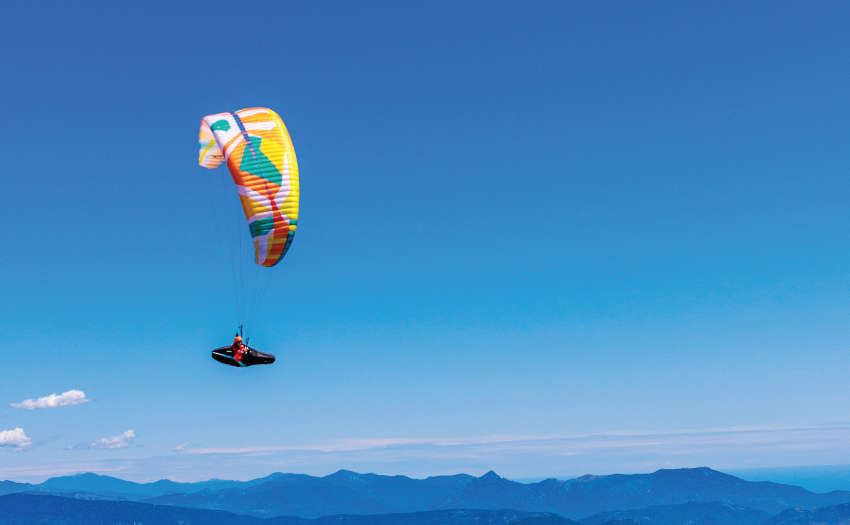
Overall design
The most obvious thing when you unroll the Lynx 2 is that is uses a 2.5-line hybrid design: that’s a two-line layout near the tips with a three-line layout in the centre of the wing. BGD’s website says this now common hybrid layout allows the Lynx 2 to, “benefit from longer brake travel, less weight, higher performance and better safety.”
Designer Tom Lolies explained, “It is the line layout we have worked on that allows for a greater brake range overall, not just the fact it is a hybrid. Trying different chordwise distribution of the attachment points we found a solution that offered nice handling and safe brake range / stall behaviour.”
Asked if they had thought about going fully two-line BGD’s Bruce Goldsmith said, “a fully-fledged two-liner would need more supporting rods in the sail, leading to a larger pack volume. We wanted the Lynx 2 to be easy to pack down super small for hiking and racing.”
The other obvious change from the original Lynx is the significant reduction in aspect ratio – it’s dropped from 6.8 to 6.2. Bruce said they wanted to make the Lynx 2 “an easy C” wing. “I believe the C class is now split in two with the high-level C being two-liners and the easy C class being 2.5 or three-liners.”
A look at the certification results bears this out, with lots of low grades and Cs only given because folding lines were used during the collapse tests; and for the brake travel at the upper end of the weight range. On paper, at least, it is a very safe C-wing.
Materials and build
Elsewhere the wing is very much BGD. There is the normal Chord Cut Billow that the company use as an alternative to the spanwise 3D seams other companies use to reduce billow. The cell openings use crossed wires to create a sharknose; these aren’t super long and only go back around 70cm on the ML I was flying. There are no extra rods around the C attachments. At the back there are mini ribs. The whole sail is made from double-coated Porcher 27g/m² cloth and comes, of course, in a unique multi-colour colour scheme.

The lines are all unsheathed and the same red colour, except for the lower brake lines. The lines are attached to the risers with softlinks hidden inside neoprene sheathes. The black risers have minimal colour coding with colour sections on the As and Bs and the clip-in points coloured red and green for left and right. There is some quite complex rigging to deal with to control the speed of the tips and for the B/C control system for the centre of the wing. Recently I have been flying two-liners and gotten very used to a handle on the rear risers for control but BGD have used a foam covered section. Personally, I prefer the direct feel of handles but when I mentioned this to Bruce his answer was that, “handles tangle in the lines when ground handling, making them inconvenient for lower level gliders.” He added, “The system of using a ’speed riser’ balances the forces on the front and back of the hand creating a cradle, that you can rest your hand in.” I can see his point.
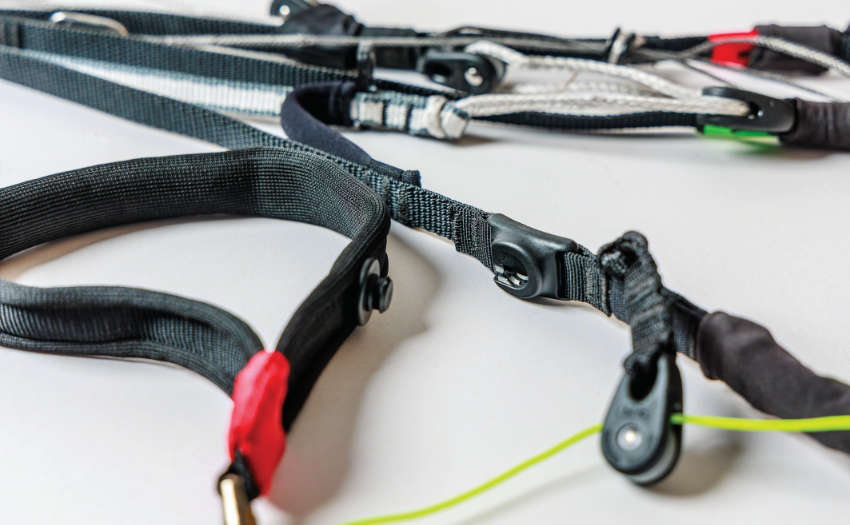
The brakes are nicely padded and soft – they are a definite improvement over the unstiffened brake handles on some other light wings. They are stowed with directional magnetic clips and there are swivels to reduce line twists. The speed system is slightly unusual in that there is no Brummel hook: the system uses Prusik loops instead.
On launch
I have to say this is one of the easiest wings to launch I have flown, especially in the C category. Even compared to many Bs it is super easy.
On my first venture out with the glider I arrived on a steep launch to find a strong and gusty thermic breeze. It was no issue for this wing: I pulled it up off to the side in a kind of lazy cobra and the wing rose easily, taking just a little guidance to get it overhead. There was no last-minute acceleration as it hit the zenith. All very relaxed.
I found this behaviour in all conditions. In lighter winds the wing is quick to inflate and comes up smoothly with no sticking points.
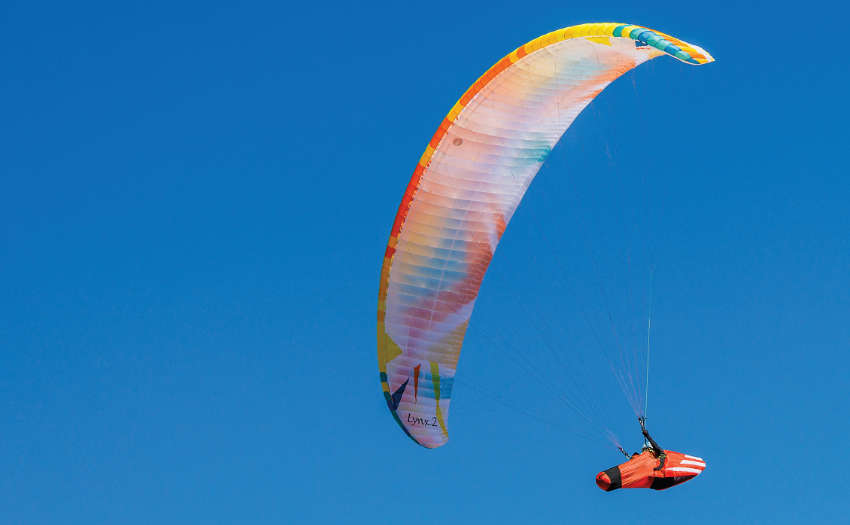
In the air
When I asked Bruce what he was most pleased about with the finished wing he said “the handling and thermalling”. I think he can be rightly proud. The moment you pull a brake the wing reacts smoothly to your input. You can easily turn it, even in the small early thermals low to the ground. I was quickly confident that I could dig into the climbs when needed.
Brake pressure feels around average, and the brakes, although reactive, have a large range of travel. My reference wing as far as handling in the C-class is probably the Flow Fusion Light and the Lynx 2 feels similar, but maybe a little smoother, which I am sure many will like.
In terms of feedback the wing tells you what the air is doing well but without any feeling of nervousness. It is all very calm and smooth. There is not much in the way of pitch movement and the reactive brakes make it easy to keep the wing directly above your head.
I flew the wing on a couple of windy and strong days. On the first I felt it was not quite biting in, but I was well below the top weight so for the second day I changed to a slightly heavier harness. I was still a good 5kg below the top of the range but I had that extra bite that helped me make it easier to stick with the climbs in the initial phase as they tracked with the wind.

Going cross-country
Heading off XC the wing is relaxing on glide. The bar is relatively light and gives around 14-15km/h of extra speed when the pulleys overlap. The wing feels nice and solid throughout the range and doesn’t move around much. There is a little roll occasionally but it never moves from above your head so you can have confidence to push on.
I have gotten used to the direct feel of handles flying two-liners and do find this style of rear-riser control a bit vague. However, you can still feel what the air is doing and control the glider, pulling the wing into the liftier lines. I did not have to catch any real pitching as the wing seems to sit above your head well on glide.
Overall it certainly sits well with the other wings in its class in terms of performance and isn’t embarrassed by the two-liners. What’s more, it is not demanding to fly so you can use more of your mental bandwidth on decision making.
Safety
The wing feels solid. BGD do design their wings to have less pressure in the tips but flying in strong conditions I didn’t any suffer wingtip tucks. There is good warning of any loss of pressure through the brakes and hitting them has an obvious effect.
I had one reasonable-sized collapse in lee conditions and the wing behaved very well, with no aggressive behaviour and with not much directional change. It did take a pump or two to get out but of course I was still in the funky air. That was the only collapse in around 15 hours of flying including a 100km cross-country flight on a strong day.
Big ears are easy to pull, they are quite big but do not thrash around as they do on some other wings. The manual recommends using speed bar with them and I felt more comfortable with a bit of speed on. You will mainly be using them with bar to descend and get away from the source of lift. They roll out very lazily, a quick pump will get them out quickly.
In spirals the wing’s bank is easy to control and you can drop it in and out of steep spirals easily and bleed off the energy on exit. Wingovers are easy, but it’s not a wing that rolls into them with little provocation. You will need to build them up steadily; after all it is an XC wing not an acro wing. But it is fun to throw around a bit and all very controlled and reassuring.
There is a lot of brake travel before you get near stall point and no surprises. This makes landing, much like the launches, a doddle. If you are approaching through lift the wing responds well to deep pumping, making top landings in tights spots easier. In general the wing flies well at slow speed but, like most modern wings, is still most efficient in thermals when flown near trim.

The verdict
I really enjoyed flying the Lynx 2. With all the recent excitement about two-line EN-Cs it is easy to forget that there are a whole group of pilots that want something that is close on performance but has sweet handling and is generally less demanding. The Lynx 2 is a definite fit for this group of pilots.
It thermals beautifully and makes few demands on the pilot, allowing you to enjoy your flying. Plus, it is light and packs down compact, which makes it perfect for adventures in the mountains, from XC flying to vol-biv adventures.
Manufacturer’s Specifications
- BGD say: “Made to inspire confidence in even the strongest flying conditions, and to keep you safe while you find your wild side in the mountains”
- Pilot level: Intermediate pilots and above
- Use: Cross-country flying and vol-bivouac
- Sizes: XS, S, M, ML, L
- Certified take-off weight (kg): 60-75, 70-85, 75-95, 88-108, 100-120
- Flat area (m2): 19.5, 21, 23, 25, 27
- Glider weight (kg): 3.2, 3.4, 3.7, 4.0, 4.3
- Cells: 65
- Flat aspect ratio: 6.2
- Certification: EN-C
Marcus flew the BGD Lynx 2 ML (88-108) at 101-103kg all up with a Woody Valley GTO Light, BogdanFly Cocoon V2 and Dudek Techno 2023.
Published in issue 245 (November 2023)


